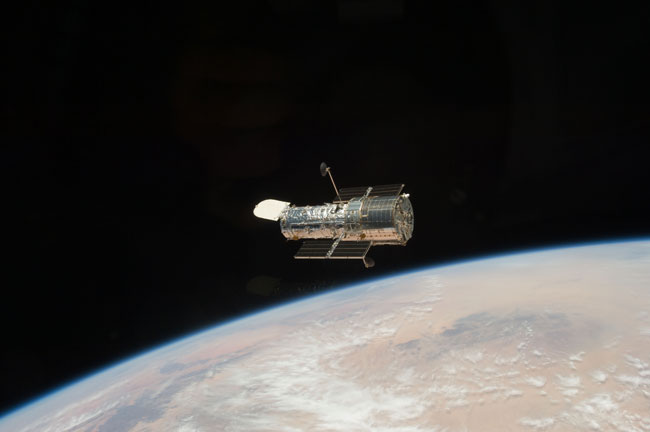How Should NASA Use Former Spy Satellite Telescopes?

NASA is asking scientists for ideas about how best to use two huge space telescopes it received from the United States' spy satellite agency earlier this year.
On Monday (Nov. 26), NASA officially invited researchers to propose uses for the telescopes, which are comparable to the agency's famous Hubble Space Telescope in size and appearance. The best ideas will be presented at a workshop this coming February in Huntsville, Ala., officials said.
"Because there are two telescopes, there is room for projects that span the gamut of the imagination," Michael Moore, a senior program executive at NASA Headquarters in Washington, said in a statement. "They range from simple balloon flights to complex missions in science using new technologies under development and the capabilities available with the International Space Station and our commercial spaceflight partners."
The former spy satellite telescopes were originally built to carry out surveillance missions for the U.S. National Reconnaissance Office (NRO), under a multibillion-dollar program called Future Imagery Architecture. But cost overruns and delays killed the program in 2005, and NASA announced this past June that the NRO had bequeathed the instruments to the space agency.
While the telescopes' apertures are equivalent to that of Hubble, they are designed to have a much wider field of view, NASA officials said.
NASA is already considering using the telescopes as a base for the proposed Wide Field Infrared Survey Telescope (WFIRST), which would hunt for the mysterious dark energy that appears to be driving the universe's accelerating expansion. WFIRST was identified as a top priority in the National Research Council's 2010 Astrophysics Decadal Survey, which delineated the main science goals the country should pursue for the next 10 years.
However, NASA is not locked into this application for the former NRO telescopes, as its call for new ideas shows.
Breaking space news, the latest updates on rocket launches, skywatching events and more!
"We will give all ideas equal consideration and choose the most promising for further study," said Marc Allen, acting deputy associate administrator for research in NASA's Science Mission Directorate. "We want to tap into innovative ideas wherever we can find them in order to optimize use of these telescope assets."
Follow SPACE.com on Twitter @Spacedotcom. We're also on Facebook & Google+.
Join our Space Forums to keep talking space on the latest missions, night sky and more! And if you have a news tip, correction or comment, let us know at: community@space.com.

Space.com is the premier source of space exploration, innovation and astronomy news, chronicling (and celebrating) humanity's ongoing expansion across the final frontier. Originally founded in 1999, Space.com is, and always has been, the passion of writers and editors who are space fans and also trained journalists. Our current news team consists of Editor-in-Chief Tariq Malik; Editor Hanneke Weitering, Senior Space Writer Mike Wall; Senior Writer Meghan Bartels; Senior Writer Chelsea Gohd, Senior Writer Tereza Pultarova and Staff Writer Alexander Cox, focusing on e-commerce. Senior Producer Steve Spaleta oversees our space videos, with Diana Whitcroft as our Social Media Editor.
